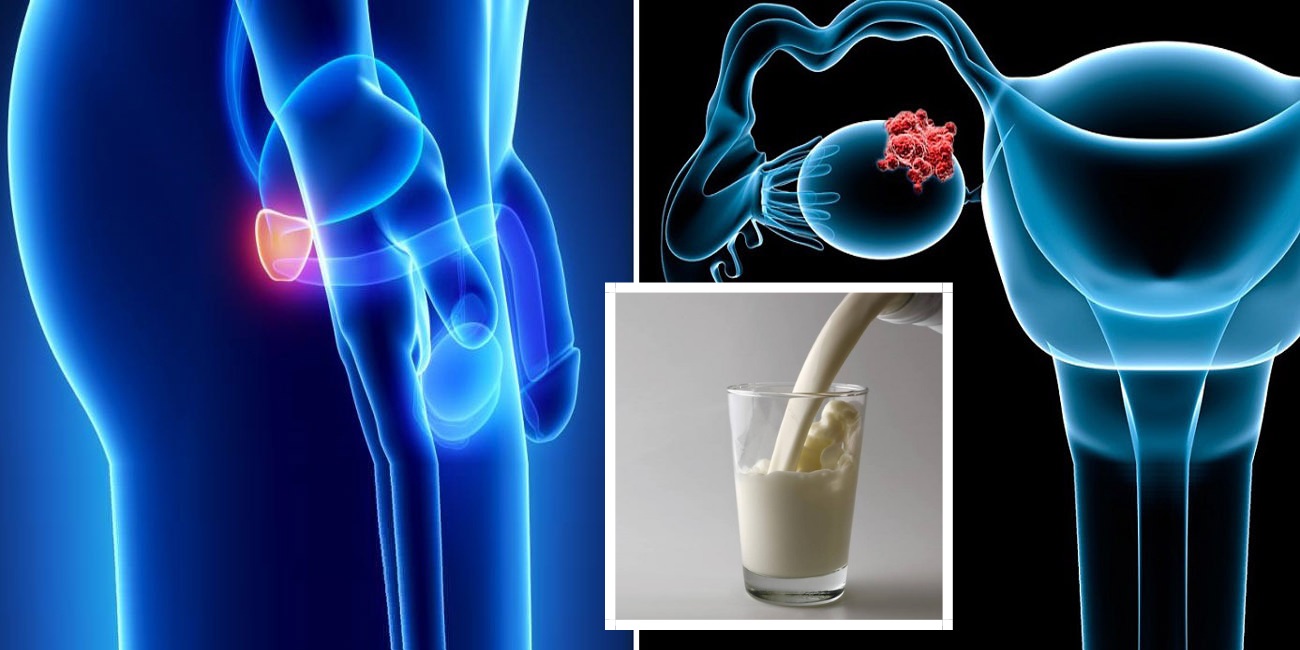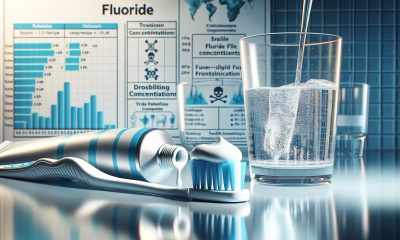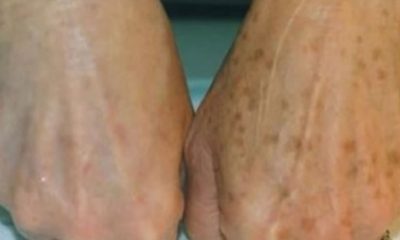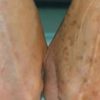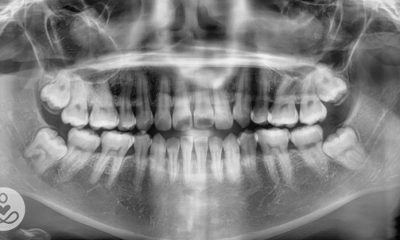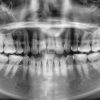Cow Milk has long been touted as the preferred source of calcium thanks to the dairy’s massive PR machine. If you consume milk (cheese, yoghurt or ice cream), then you are probably also accompanied by a number of health problems. Lactose intolerance is only one of many. Why is milk bad for humans, but also for the cows themselves?
There are 12 reasons why it is not recommended to consume milk.
1. Weaker bones
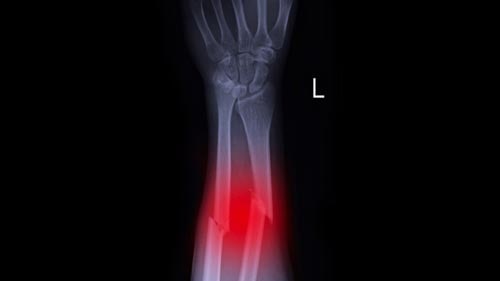
With a high milk consumption the bones become weaker.
In the face of a long-standing popular belief that calcium is good for bones, the opposite is true: cow’s milk actually deprives calcium of our bones. Animal proteins produce acid when degraded, and calcium is an excellent acid neutralizer. To neutralize and flush out the acids, our body must use the calcium in the milk and some of our own calcium reserves. Every glass of milk we drink releases calcium from our bones. For this reason, one medical study after another has shown that people who consume the majority of cow’s milk have significantly higher fracture rates than people who drink little or no milk. And if you eat large quantities of cheese? Take one serving of saturated fat, sodium and cholesterol.1),2)
2. Prostate cancer
Milk and cheese are associated with increased prostate cancer risk.3)
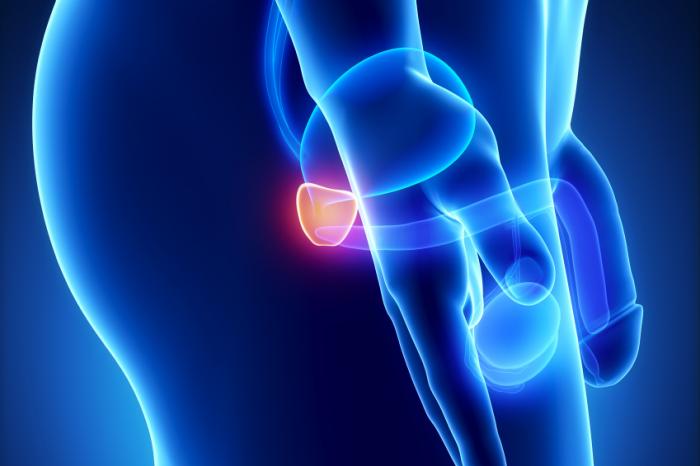
3. lactose intolerance
Lactose in cow’s milk can be difficult to digest for humans, which can lead to nausea, cramps, bloating and diarrhea. Difficulties in milk digestion can also develop in later life and lead to progressive worsening of symptoms.4)
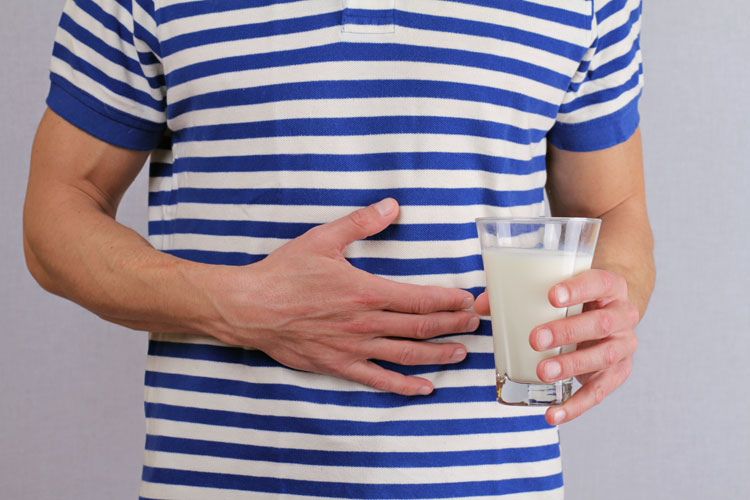
More and more people worldwide are suffering from lactose intolerance.
4. Acne
Several studies have linked the consumption of dairy products of all kinds with increased prevalence and severity of acne in boys and girls. 5)

Often, milk intake is the cause of severe acne.
5. Cholesterol
A single serving of milk can contain up to 24 mg of heart-damaging cholesterol. One serving of cheese (30g) contains 30mg. But no vegetable food contains cholesterol. 6)
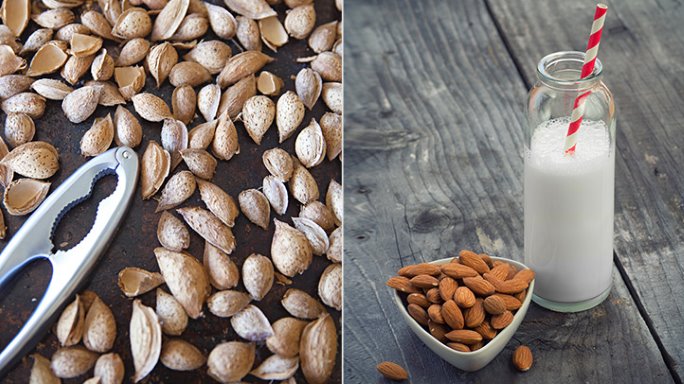
Vegetable “milk” such as e.g. Almond milk or soy milk have no cholesterol at all.
6. Ovarian cancer
A Swedish7) and Dutch stud8) found that women who consumed four or more servings of dairy a day were twice as likely to develop serous ovarian cancer.
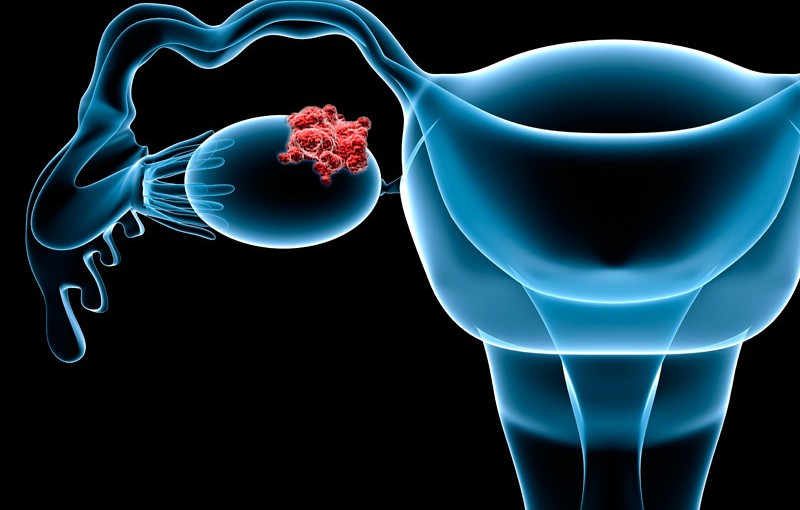
Ovarian cancer is an increasingly common cancer in women.
7. Milk allergies
Milk allergies are a different caliber than lactose intolerances and can potentially cause severe and dangerous reactions (usually in young children), such as vomiting or anaphylaxis.9)
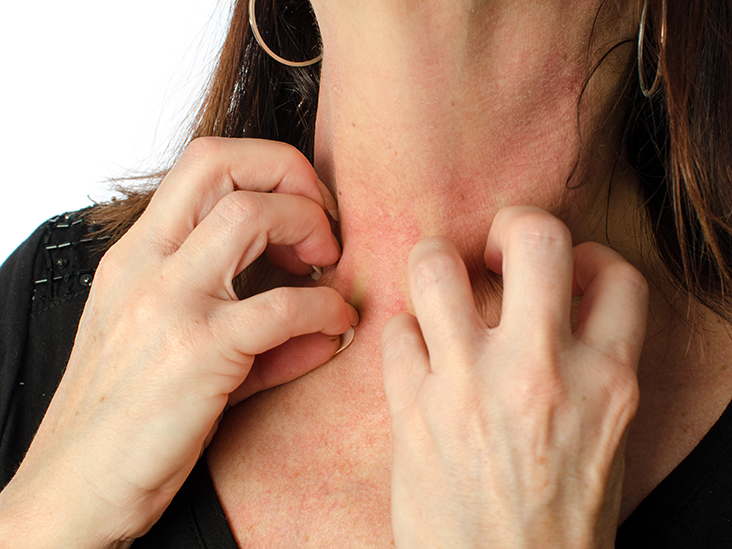
A woman suffering from anaphylaxis.
8. Antibiotika
Kühe werden oft mit Antibiotika vollgepumpt, um sie am Leben zu erhalten und Milch unter schmutzigen Bedingungen in der Fabrik zu produzieren. Dieser Antibiotikamissbrauch führt auch zu einer Zunahme von antibiotikaresistenten Bakterien. Wenn Menschen mit diesen sog. Superbaktierien infiziert sind, haben Antibiotika bestenfalls eine verminderte Wirksamkeit und sind im schlimmsten Fall machtlos.10)
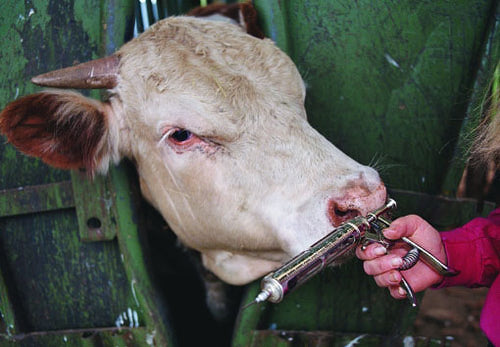
A cow is injected with antibiotics.
9. Saturated fat
A single serving of whole milk may contain more than 20 percent of the recommended daily intake of saturated fat. If you take three servings of whole milk, you are already at 60 percent of the day – even before you eat anything. Cheese is even worse: pizza and cheese are sometimes the largest food sources of saturated fats in Europe.11)

Cheeses contain a lot of unsaturated fatty acids.
10. Weight gain
Despite industry claims, a study of more than 12,000 children found that the more milk they drank, the more weight they gained – and skimmed milk and 1 percent milk actually seemed to gain more weight than drinking 2 percent or whole milk. The study also found that replacing soda with milk did not result in weight loss.12)
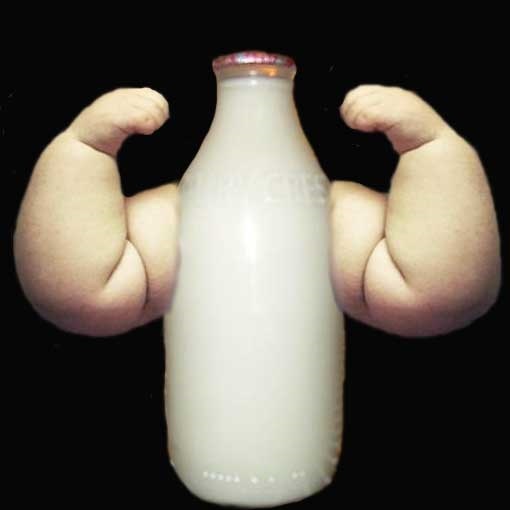
Low-fat milk makes “more fat” than normal milk.
11. Sodium
Cheese can contain up to 1400 mg of sodium per 100g. Varieties such as halloumi, feta and edam cheese (as well as processed cheese) are so loaded with sodium that they are actually saltier than seawater.13)
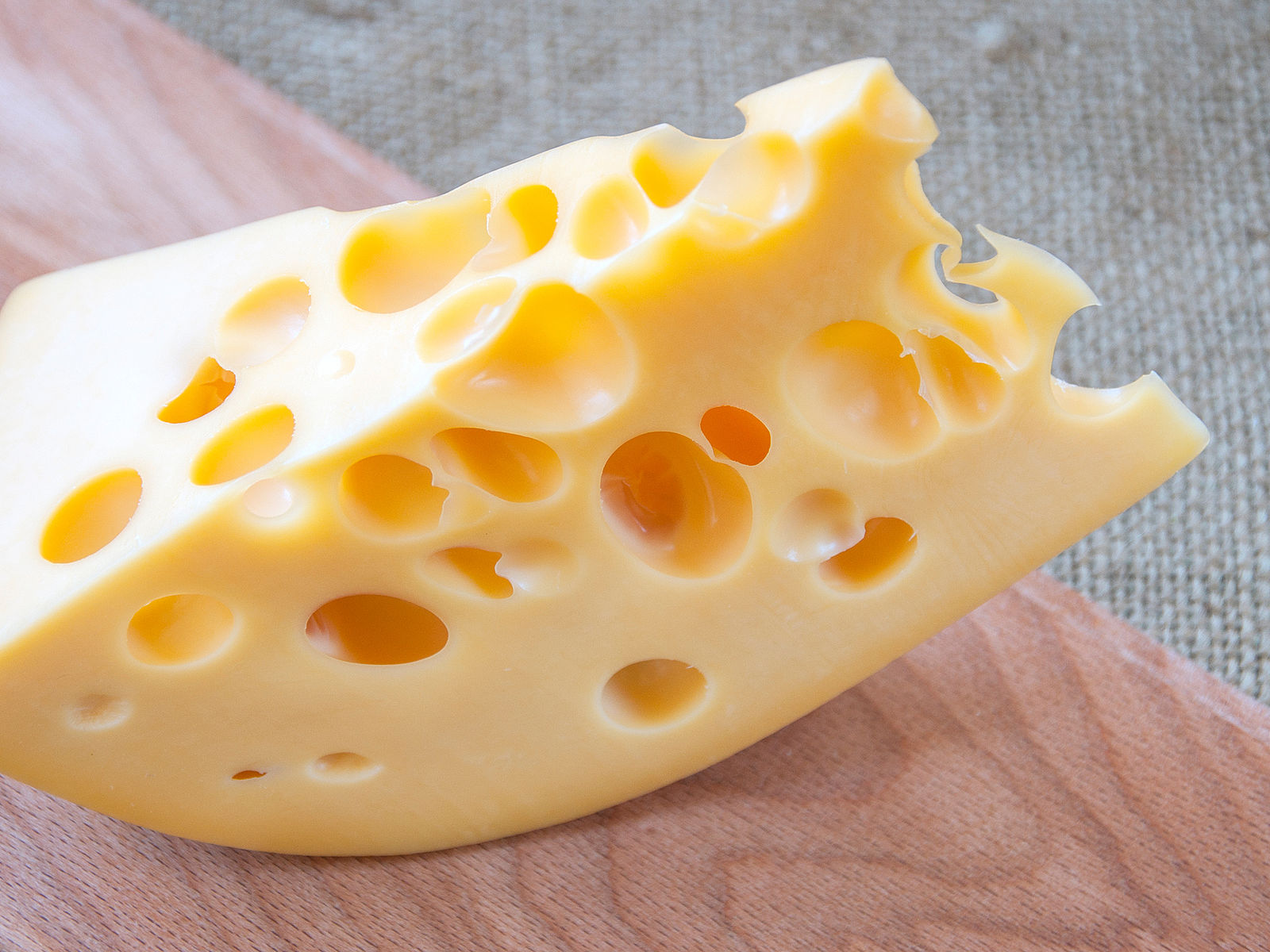
A piece of Edam cheese.
12. Cheese is addictive.
Cheese is made from milk and it has a high content of casein. Casomorphines are produced from the milk protein during digestion. And there is also an evolutionary reason why milk contains casomorphine: it promotes the attachment of kittens to their mother. In addition, the milk not only saturates the animals, it also calms them down. Breast milk also contains casomorphine – but in a much lower dose than cow’s milk.
In cheese, casomorphines are much more concentrated than in milk. The reason for this is the significantly higher content of milk fat and milk protein in the cheese. In humans, the casomorphins pass the blood-brain barrier and bind to the opioid receptors of the brain. These receptors are also responsible for the noisy state after taking morphine. Consequently, casomorphins also produce a drug-like effect: the blood pressure drops and the sensation of pain decreases. As a result, a state of sleepy relaxation sets in. And: Our body gets used to this condition very quickly. Consequently, we want more of it – more intoxication, more cheese.

Who can resist dishes with cheese?
Common sense
Apart from humans (and pets fed by humans), no species drinks milk beyond their natural age or drinks the milk of another species. Cow’s milk is suitable for the nutritional needs of calves who have four stomachs and will gain hundreds of pounds in a matter of months – sometimes weighing more than 1,000 pounds before they are 2 years old. Cow’s milk does not meet the nutritional needs of humans, so it’s no wonder that eating cow’s milk and its derivatives causes us so many problems.

Conclusion: If she is not your mother, it’s not your milk.
References:
1) Cumming RG, Klineberg RJ. “Case-Control Study of Risk Factors for Hip Fractures in the Elderly”. American Journal of Epidemiology. Vol. 139, No. 5, 1994
2) Feskanich D, Willett WC, Stampfer MJ, Colditz GA. Milk, dietary calcium, and bone fractures in women: a 12-year prospective study. American Journal of Public Health. 1997
3) https://archive.sph.harvard.edu/press-releases/archives/2000-releases/press04042000.html
4) https://www.webmd.com/digestive-disorders/features/options#1
5) https://www.ncbi.nlm.nih.gov/pmc/articles/PMC6115795/
6) https://www.ncbi.nlm.nih.gov/pmc/articles/PMC5867544/
7) https://www.ncbi.nlm.nih.gov/pubmed/15531686
8) https://www.ncbi.nlm.nih.gov/pmc/articles/PMC2361074/
9) https://www.ncbi.nlm.nih.gov/pmc/articles/PMC4298661/
10) https://www.ncbi.nlm.nih.gov/pmc/articles/PMC5766636/
11) https://www.ncbi.nlm.nih.gov/pmc/articles/PMC4736684/
12)https://www.ncbi.nlm.nih.gov/pmc/articles/PMC4807700/
13)https://www.sciencedirect.com/science/article/pii/S0022030211001172
Important: The information does not replace professional advice or treatment by trained and recognized physicians. The contents of medizin-heute.net can not and should not be used to independently diagnose or start treatment.


